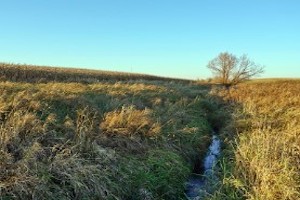By Rachel Leege
To combat weeds, farmers use a variety of tools and methods. By understanding the strengths and downfalls of each tool, a farmer can make the best decisions for his or her operation to keep pesky weeds out of the field.
One tool farmers can turn to for weed control is applying herbicides. New research is helping us understand a specific herbicide even better: atrazine.
Atrazine is one of the most common herbicides used in the United States. It can be used to manage weeds in crops like corn, sorghum, sugarcane and turf. The chemical kills weeds by preventing photosynthesis in the plant.
A benefit of herbicides, like those with atrazine, is that they reduce the need for tillage. In addition to its effects on soil health, tillage can increase erosion of precious soil. Reducing tillage conserves our soil by preventing erosion and maintaining healthy soil structure.
A downfall of atrazine, though, is that it can sometimes make its way into streams and rivers.
After the chemical is applied to a field, atrazine breaks down in the soil and turns into another compound, called deethylatrazine (DEA). This is a good thing, since DEA is less toxic to aquatic organisms than atrazine.
In recent years, atrazine use has been decreasing. However, despite the decrease in atrazine use, concentrations of the secondary compound, DEA, have been increasing.
Karen Ryberg and her team thought there must be more to this puzzle than just atrazine use.
Ryberg, who works at the United States Geological Survey, wanted to determine the factors, other than usage, that influence trends in herbicide concentrations in streams.
